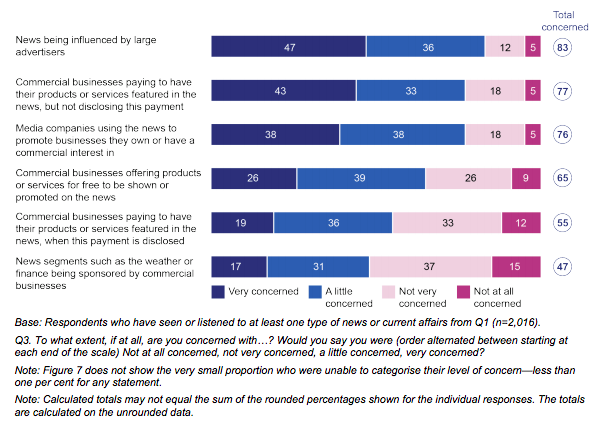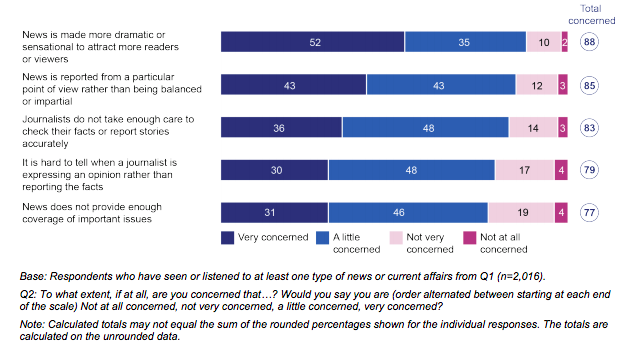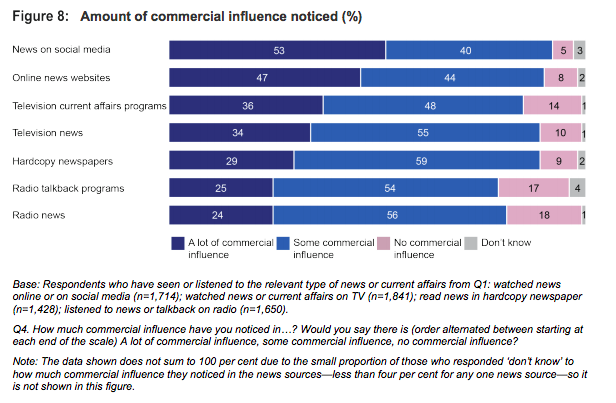Regulator zooms in on advertisers’ influence on news, with 8 in 10 Australians concerned
Eight in 10 Australian adults are worried about advertisers influencing the news, new research from the Australian Communications and Media Authority (ACMA) has found.
ACMA surveyed more than 2,000 Australian adults last July, the majority of whom expressed concern about the impartiality of, and commercial influence placed on, news. 77% of the group reported being concerned about commercial businesses paying to have their products or services featured in the news, but not disclosing the payment, while 58% think there’s more commercial influence in local news today than there was just three years ago.

Almost everyone (97%) have noticed commercial influence in at least one news source.
The highest level of concern is the news being influenced by large advertisers, with 47% of people ‘very concerned’. 38% were very concerned that media companies are using news platforms to promote businesses they own or have a commercial interest in.
In reporting the research, ACMA drew attention to a range of views expressed in their interviews with the Australian public. One participant aged between 18 and 34 from Mount Gambier said: “I would think it would be difficult [to detect commercial associations] a lot of the time, which is why I have a general sort of a lack of trust … You never know behind the scenes what kind of strings are being pulled to decide what stories get run and which stories get cancelled and why they get cancelled or why they are run.”
The research, released today alongside a discussion paper, also showed 88% of adults are concerned the news is dramatised or sensationalised to attract a bigger audience.
“There is ongoing debate about the credibility of news delivered online. But TV and radio remain an important source of news for the majority of Australians,” ACMA chair Nerida O’Loughlin said.
“If audiences have concerns about the credibility of news on TV and radio, then these need to be addressed by industry.”

O’Loughlin
The blurriness between presenting opinion and fact was another issue canvassed. 85% worry news is reported from a particular point of view rather than being balanced and impartial. And 79% reported concern about the difficulty in distinguishing between a journalist expressing an opinion rather than reporting on facts.
“A lot of the newsreaders have a personality now and so they also put across their opinion,” said one 55+-year-old research participant from Newcastle.
“They get more airplay because they’ve become more popular … everything’s more drama.”
O’Loughlin raised the possibility of hybrid, and longer, news programs contributing to perceived bias, with the ACMA wanting industry stakeholders to comment on the discussion paper by Friday 28 February.
“As Australia’s broadcasting regulator, we want to make sure that current regulatory arrangements still do the job they were designed to do in the contemporary broadcasting news environment,” O’Loughlin said.
“For example, we are interested in whether the move from half-hour news bulletins towards hour-long hybrid news and current affairs programs has impacted the impartiality of news reporting.
“It’s also an opportunity to look at principles relating to impartiality and commercial influence that might usefully apply to the delivery of news on online platforms.”




